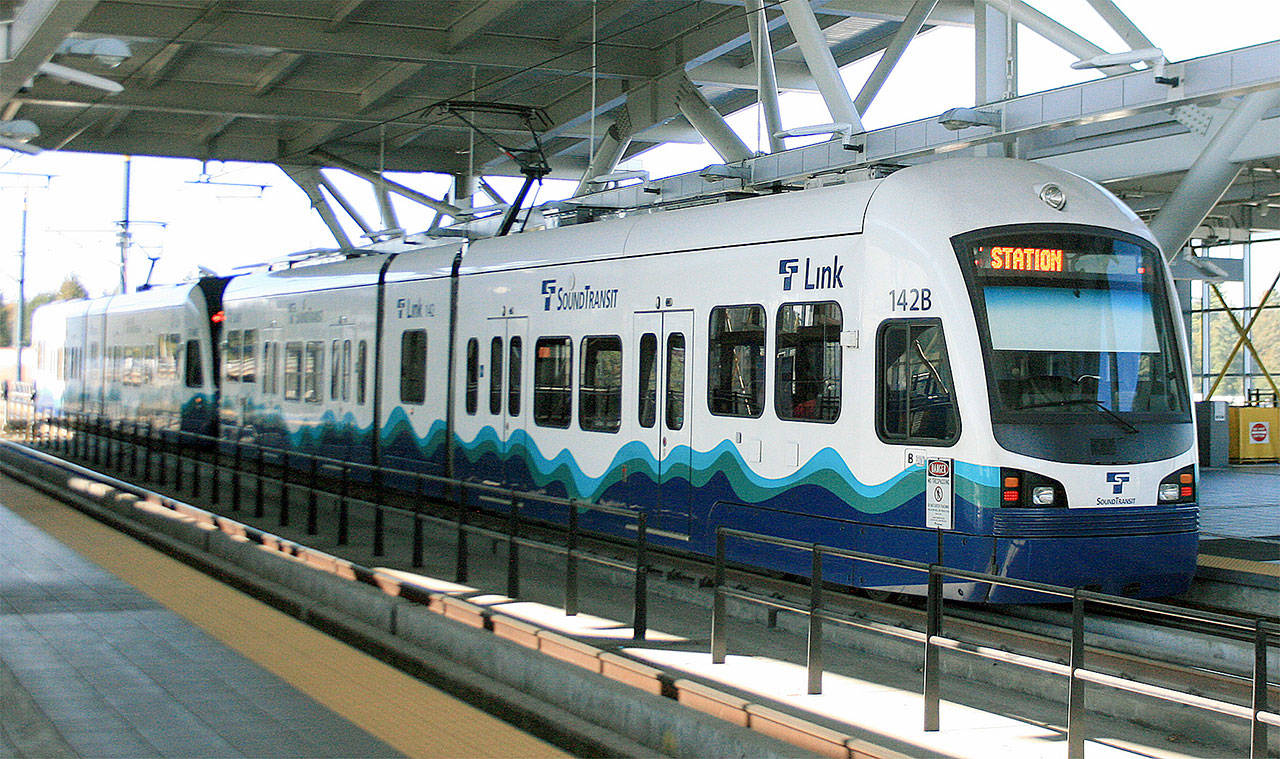Due to COVID-19 risks, Sound Transit is directing contractors to suspend almost all construction on its light rail transit expansion projects across the region, starting April 6.
The very limited work that does continue will focus on tasks considered critical and/or necessary to ensure that all sites remain safe and secure and/or to avoid mobility, environmental or other impacts, according to a Monday Sound Transit news release.
Examples are included below. This work will move forward only under appropriate safety measures including additional worker training and increased monitoring of updated safety plans.
Sound Transit will immediately shut down work in the event that contractors are unable to comply fully with safety plans, as it did on one construction project on March 31.
Sound Transit arrived at this decision after carefully evaluating what heightened measures would be necessary to ensure the safety of the construction workforce and whether contractors are prepared to take those measures.
Sound Transit will be boosting its oversight of those sites that remain open by reallocating safety inspection and construction management resources from those projects that have been closed down.
An example of the work that will continue is light rail construction on the Homer M. Hadley floating bridge across Lake Washington on Interstate 90. For safety reasons activities on the floating bridge are seasonally restricted. Crews will work to complete necessary work during April through October work window.
Contractors will continue to monitor security at worksites and to maintain the sites, including environmental protection measures.
Sound Transit expects that construction personnel who work on ongoing projects will continue to do so on a voluntary basis and not be compelled.
Period of suspension currently set for April 6 to May 4
Sound Transit has the discretion to extend or decrease this period. The agency will monitor the circumstances surrounding each project and continue to work closely with federal, state and local authorities and its labor and contractor partners to evaluate future actions.
Examples of critical work that will continue include:
* Utility work that is already in progress at various locations will be completed
* Work in streets of the Tacoma Stadium District that is highly disruptive to the public
* Work on the I-90 floating bridge
* Certain sidewalks, ramps and driveways on the Eastside, which are important for the safe passage of pedestrian and vehicular traffic
* Demolition of buildings along the Federal Way alignment (from SeaTac through Kent) that would pose a public health or safety concern if left standing
* Fire protection systems work in the I-90 Mount Baker Tunnel
* Work at the Link Operations and Maintenance Facility East
Expanded safety measures for continuing work may include provisions in the following areas:
* Reducing work crew sizes
* Staggering report times to avoid large groups
* Adding sanitation facilities including more hand washing and hand sanitizer stations
* Using face shields
* Screening of employee wellness by first line supervisors upon reporting to the site
* Emphasis of COVID-19 symptom recognition, personal protective measures, personal protective equipment and revised work practices



